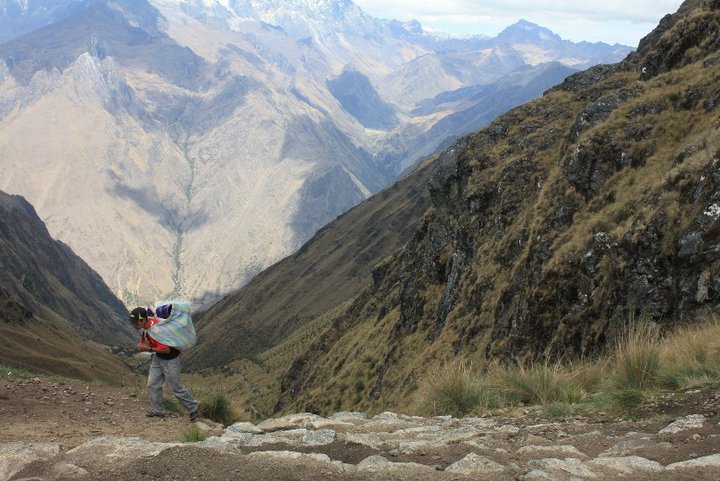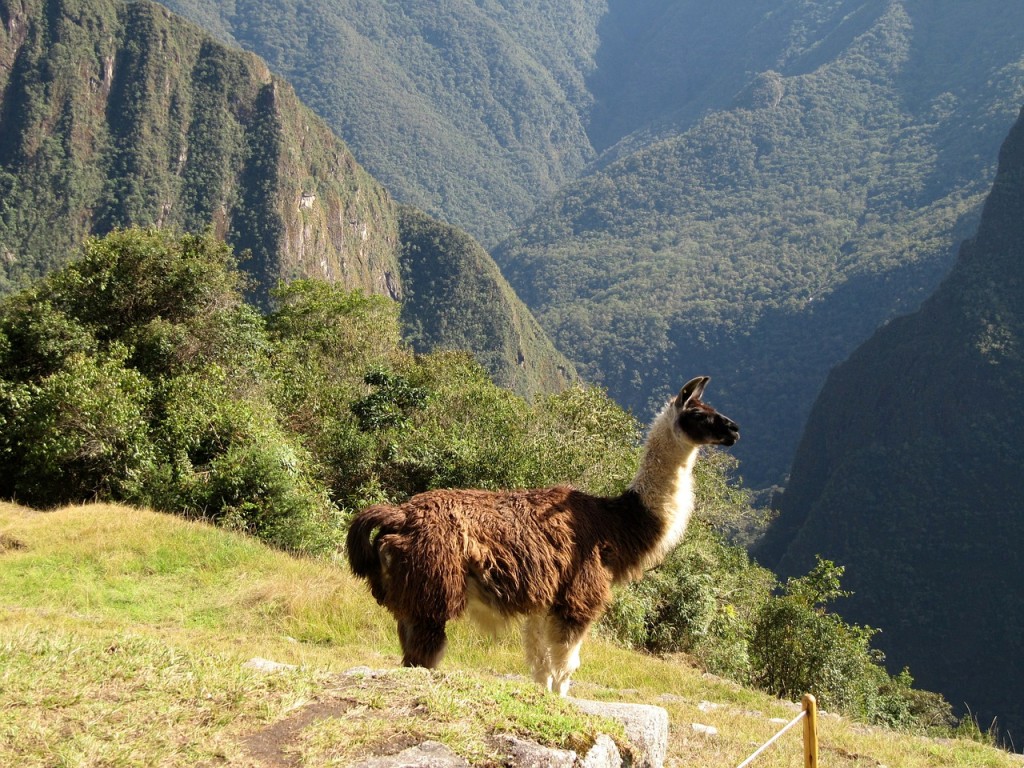7 Things I Learnt Hiking The Inca Trail To Machu Picchu

Siân Edwards is a Sydney-based freelance writer and food and…
According to TS Eliot, “The journey, not the arrival, matters.” Nowhere is this more true than when you hike the Inca Trail to the once-lost city of Machu Picchu in the Cusco region of Peru.
Discovered by accident in 1911, today, Machu Picchu is easily one of the most recognisable and popular archaeological sites in the world. Of course, you can reach it via train and bus, but there’s nothing quite like reaching a destination after a four-day trek in the footsteps of the very people who built it.
[related_articles]57891,29942[/related_articles]Before you tick Machu Picchu off your bucket list, we’ve shared seven important lessons we learnt while hiking Peru’s Inca Trail.
#1 Start planning your Inca Trail trek early. Like, now!

Hiking the Inca Trail isn’t for the last-minute backpacker. Due to its popularity among travellers from all over the globe, the Peruvian government now restricts the number of people walking the Inca Trail to 500 per day (this includes your tour guide and porters). You therefore need a permit to do the Inca trek.
So, if you’re planning to walk the Inca Trail within the next year, you better start researching certified travel tour companies now. While Machu Picchu stays open all year round, the traditional Inca route is closed for maintenance in the month of February and permits are often booked-out months in advance, especially around peak season (June to August).
[related_articles]59937,59686,50114[/related_articles]Oh, and it pays to do your research. If you miss out on your preferred dates and don’t have the flexibility to change your trip to the Cusco Region of Peru, you need to research alternative trails to reach the summit. The Salkantay and Lares Treks are two of the most popular that don’t require advanced bookings and will still take you through a range of Inca sites before reaching the peak of Machu Picchu.
#2 Machu Picchu isn’t the only Inca Empire site
Sure, it’s the most famous and most pictured ancient citadel in the country, but, as you’ll discover, Machu Picchu is just one of many sites you’ll come across while hiking the Inca Trail. You’ll reach the “Town Above the Clouds”, called Phuyupatamarca, for example, 3650m above sea level.
Even before you start the trek, you’ll likely visit other sites, like Pisac in the Sacred Valley, that reveal the hidden secrets of the Inca empire and its peoples’ innovative architecture and culture.
The great thing about the Inca Trail is that your local tour guide will take you to each site and explain the history and significance in the Inca story. It’s an extra special bonus that other hikers may never see and gives you a holistic view of the people as you follow their footsteps to the top.
#3 Pack smart

Long gone are the days when you could trek to Machu Picchu by yourself, backpack in tow. Thankfully, you will only need to carry a small day pack of essentials like water, a rain jacket and snacks while you make your way to the next camp. The porters are assigned a duffel bag with your remaining items to carry straight to camp.
With strict daily weight limits, they can only carry 6kg of your stuff alongside their own camping equipment. Once you take into account your sleeping bag and mat (around 3.5kgs), you’ll only have a few more kilos of space for a change of clothing and toiletries, so pack smart.
Pro tip: Take a pair of thongs for when you reach camp. Your feet will thank you for the fresh air after eight hours of being confined to hiking boots.
#4 You’re stronger than you think
The 45km Inca Trail is said to have been built as a holy pilgrimage; a way for the Inca people to prove their faith to their gods. But it was also built to help ward off enemies. With steep, rocky stairways and inclines, it was designed to take the wind out of enemies (like the Spanish conquistadors) and give the Incas a chance to see them coming and react accordingly.
The Inca Trail tour is possibly one of the hardest things you’ll ever do. Depending on how your body takes it, you could be racing up the mountain feeling fine one minute and then crash and burn at the next turn, wondering why you decided to pay for the privilege of the hike in the first place. Remember “mind over matter” if you get to this point – take it slow and steady and remember that it’s not meant to be easy.
[related_articles]50200,49231[/related_articles]You’re one of only a few hundred travellers on that trail that day. It’s as much a mental game as it is a physical one.
Pro tip: Hire walking sticks, two of them. They will keep you upright as you scale the stairs and keep you from stacking it as you head down, too. Those things are lifesavers.
#5 Porters are superhuman

Taking the challenging nature of the hike into consideration, the local porters who follow you along the trek complete all of the above without huffing and puffing. Those quiet Peruvians have more stamina than seems possible, and they’ll make you feel like a snail as they race past you on the Inca Trail. Not only do they carry 20kg on their backs, they also set up camp and then cook you a three-course meal fit for a king.
On our trip, one poor guy was so sick he couldn’t walk so they just heaved all six feet of him onto their shoulders and piggy-backed him for two days.
Pro tip: Make sure you carry enough cash to tip your porters and guides appropriately. They work extremely hard to make your experience as easy as it can be before they head back to their home life. Reward them for their hard work.
#6 Someone will always get sick, but it’s still worth it
Altitude sickness on the Inca Trail is real, and so are food poisoning and dehydration, so make like a scout and come prepared. Before you depart Australia, read up on Smart Traveller and speak to your doctor about all the travel vaccinations and medication you’ll need for altitude sickness and any tummy troubles.
Being so high above sea level can do strange things to your body, so try to allow time to get used to the altitude before you start your trek. Peru’s Cusco region is about 3000m above sea level.
[related_articles]50069,59092[/related_articles]Locals swear by the traditional coca leaf to ward off the effects of altitude sickness and other ailments, and chewing it raw, eating it mixed in coca sweets, or drinking it boiled in tea is customary along the trek. You can decide if it’s true.
Of the 16 people on my trek, 12 got sick or injured one way or another, so make sure you have all your creature comforts (pack twice as much toilet paper and baby wipes as you think you’ll need) and listen to your tour guide if it gets really bad. Despite all this, there was barely a moan at the end when we reached the peak.
#7 It’s the journey, not the arrival

Despite the arrival to Machu Picchu being spectacular – especially if you reach the Sun Gate and there are no clouds hiding the summit – it will be the four hard days of hiking you remember best. The early morning wake ups with a hot cup of coca tea, the three-course meals prepared by your porter-chefs, and those damn Incan stairs are the things you’ll look back most fondly, so try and appreciate the experience as you go.
Take breaks along the trail so you can take in the magical views or get that llama selfie you’ve always wanted. And remember, it’s not a race. It’s not every day you get to walk the Inca Trail.
[qantas_widget code=LIM]Check out Qantas flights to Peru to begin your adventure.[/qantas_widget]Siân Edwards is a Sydney-based freelance writer and food and travel blogger who has travelled to more than 20 countries. She has written for publications including Holidays for Couples and Go Camping Australia magazines and contributes to various online sites like this one. When she’s not travelling, she’s tweeting at @sianwithashh about how she wishes she was travelling (plus other cool stuff).








